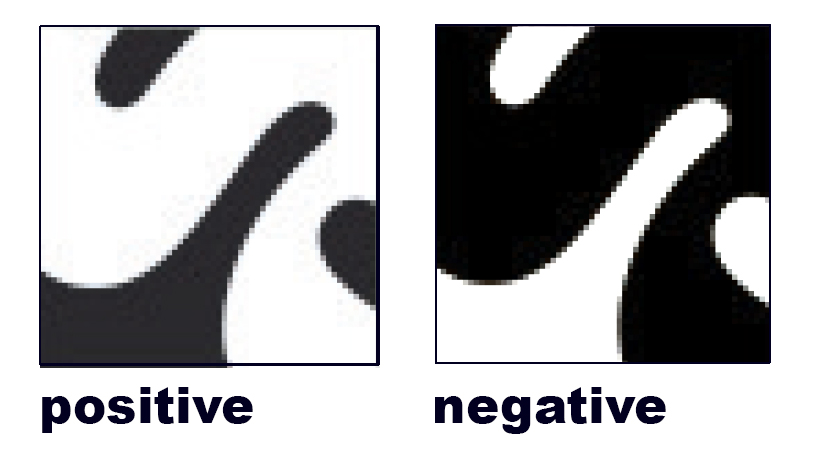Due: 11:30, Friday, September 17
Category: figure-ground letter digital_pos&neg
To Do
-
- refine your letter
- comment
- choose
- watch
1 Refine: your letterform
-
- Refine your 2 best letterforms
Criteria
-
-
-
-
-
- square format?
- does the design use shape or line?
- does it have an equal amount of black and white?
- does it demonstrate a figure-ground principle? (does the eye shift back and forth between
-
-
-
-
2. Once they are completed, create a negative version of each.
3. A negative version uses the opposite color. What was black will be white, what was white will be black.
-
-
-
-
- The positive and negative versions MUST be exactly alike except using the opposite color
- One way to do this is to “invert” your letterform in photoshop
- Select object > Image > Invert
-
-
-

4. Post all four to OpenLab
name post:
“figure-ground letter digital_1Positive_firstName lastName” “figure-ground letter digital_1Negative_firstName lastName” “figure-ground letter digital_2Positive_firstName lastName” “figure-ground letter digital_2Negative_firstName lastName”
category: figure-ground letter digital_pos&neg
2 comment: on 2 different student’s posts
Comment using the assignment criteria, see above, and the figure/ground relationship.
-
-
- Give your assessment in terms of what is working or is not clear.
- Use descriptive language; balance, weight, line, form, etc. Words like nice and good don’t explain much.
- Be direct: too much white? too much black? Explain why.
-
3 choose: an object
In our next project, we will create an icon from an object that you can hold in your hands
Choose objects that have distinct qualities, you will need these to make your icon identifiable
For example, if your object is in the shape of a square without any discernable marks, your icon may be interpreted as a square and not your object
Our icon will work be black and white. do not use color as an identifying mark
Bring 3 objects to class on Friday.
4 watch: how do we see
How do we see?
Tom Wujec talks through three areas of the brain that help us understand words, images, feelings, connections. Begin 1 minute in https://www.ted.com/talks/tom_wujec_3_ways_the_brain_creates_meaning 4:20
Add a comment to the chat



